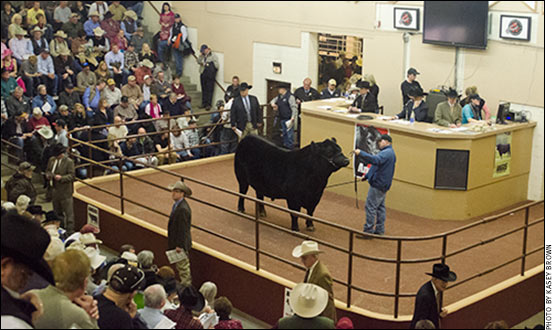
What is a Bull Worth?
Some rules of thumb in determining a bull’s worth.
I often get the question, “How much should I pay for a bull?” My first answer is “Whatever the market will bear.” Admittedly, that answer really gives no insight into return on investment for the producer relative to traits of emphasis for their particular marketing goals. With the record prices currently being observed in all markets of the beef industry, it is no secret that this translates to increased prices of replacement breeding stock.
While to my knowledge no calculator exists to determine the exact price a producer should spend on a bull, there are multiple factors that can be considered to establish a base price. Typical rules of thumb I have heard through the years for estimating the value of an average purebred or composite bull include two times the value of a fed steer, five times the value of a feeder calf at weaning, or 25 times the hundredweight (cwt.) price of feeder calves. In the current market, using these thumb rules, we get an approximate range of $3,975 to $4,650, which is very representative of early sale reports from 2014.
While spending less does not mean you have purchased an inferior bull, it should be expected that an above-average bull for traits such as calving ease, weaning weight, docility, stayability, marbling, etc., will likely garner a premium.
Assuming an average bull in today’s market will be utilized for four years and mated to 100 cows, the mating fee over the life of the bull will be about $43 per cow. Regardless of base price, for every $500 more spent on a herd sire, it raises the service fee only $5 per cow over the life of the bull.
Given today’s feeder prices, for every $500 more spent on a herd sire, only 3 more pounds of weaning weight per calf would need to be obtained to offset the added investment on a sire with improved growth expected progeny differences (EPDs). Similarly, only 0.5 more calves would need to be born to a sire with an improved calving-ease EPD profile. Given the fluctuations in grid premiums and discounts, return on investment needed for bulls with improved carcass traits is harder to pinpoint, and will be specific to your operation.
The initial investment of a bull in today’s market may seem staggering, but it is an investment that adds immediate value to the herd working forward.
Good luck, and happy bidding.

Editor’s Note: Patrick Gunn is an Iowa State University Extension cow-calf specialist.





